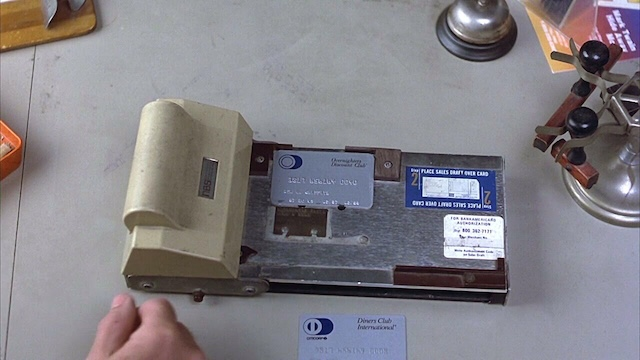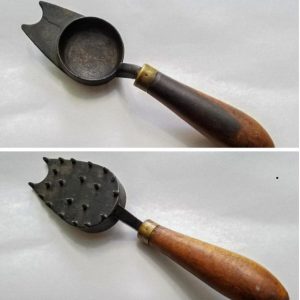Remember the satisfying kachunk sound of a credit card being swiped through a machine? That brief moment used to mark the end of a transaction—and the beginning of a new era. Before digital wallets, chip readers, and tap-to-pay took over, the humble credit card swiper was the tool every business needed to keep the cash flowing.
But here’s the real kicker: this seemingly simple device didn’t just process payments—it changed the way the world paid for everything. Let’s rewind to explore how the credit card swiper came to be, how it worked, and why it still deserves a place in our collective memory.

The Birth of a Payment Revolution
In the early days of commerce, paying with a credit card wasn’t exactly smooth. Before machines, everything had to be verified manually—written forms, phone calls, and hand-signed slips. It was slow, clunky, and prone to mistakes.
That all changed in 1958, when American Express introduced the magnetic stripe card. This was the turning point. Suddenly, credit cards could store important info—like your account number—right on the back of the card. All it needed was a machine to read it.
Enter the credit card swiper. It was mechanical. It was portable. And it was brilliant.
Video: Watch the video Ode to the Credit Card Imprinter to take a nostalgic look at this once-essential piece of technology.
How the Credit Card Swiper Actually Worked
If you’ve used one, you know the ritual: a plastic card, a sturdy frame, a sliding mechanism. But what was happening under the hood?
Here’s the breakdown:
- The merchant placed the card in a slot.
- A layered carbon receipt was placed on top.
- The swiper was pulled across, pressing the card’s raised numbers onto the receipt.
- Both the business and the customer got a physical copy of the transaction.
This tactile process wasn’t just functional—it created a physical record. That meant fewer disputes, easier accounting, and faster service. It was low-tech, but high-trust.
The Swipe Era: A Business Must-Have in the ’80s and ’90s

By the 1980s, the credit card swiper had become a fixture. You’d see it everywhere—from diners and boutiques to car rental counters and hotel desks. If you ran a business, having one was non-negotiable.
These swipers did more than just make payments easier. They made credit cards accessible. No longer limited to elite stores or exclusive clubs, credit card payments trickled down to mom-and-pop shops, flea markets, and mobile vendors.
And let’s not forget the carbon copy receipt. It was your proof of purchase. The original went to the business, and you kept the bottom sheet—often stored in wallets, purses, or glove boxes for weeks.
Fun Fact: Many small merchants still kept manual swipers on hand well into the 2000s as a backup in case of power outages or connectivity issues.
From Swiping to Tapping: The Digital Takeover

As sleek as the swiper was, it couldn’t keep up with the future.
By the early 2000s, EMV chip cards and online verification systems started to take over. These provided better fraud protection and allowed for more secure data handling. Eventually, contactless payments and mobile apps like Apple Pay and Google Wallet redefined the checkout experience.
Swiping started to feel… slow. Clunky. Dated.
And yet, for those who lived through its prime, there’s something oddly nostalgic about it. It wasn’t just a payment method—it was a moment.
The Endearing Quirks of the Credit Card Swiper
Video: Watch the video 4850 Flatbed Operating Instructions for a clear and detailed guide on how to use this flatbed scanner effectively.
Let’s take a moment to appreciate the personality this little machine brought to retail:
- The Sound: That swoosh-thunk was the music of retail therapy.
- Manual Imprints: When the system was down, swipers still got the job done.
- Portability: Traveling salespeople loved these compact devices—they fit in briefcases and could be used anywhere.
- Simplicity: No batteries. No Wi-Fi. No software updates. Just insert, swipe, sign.
In its prime, the credit card swiper wasn’t just a machine—it was a symbol of trust and convenience.
Legacy in Today’s Digital World
So, does the credit card swiper still matter?
Absolutely. It laid the foundation for everything we use today. Chip readers, contactless terminals, mobile scanners—they all evolved from that same basic need: to move money faster, safer, and smarter.
It also introduced us to the idea of card-based identity. Today, your credit card does more than pay for dinner—it stores rewards, verifies your age, earns miles, and logs your purchase history. The swiper helped us step into that world.
Conclusion: The Humble Swipe That Changed the World

We might not use them anymore, but credit card swipers will always be part of the digital payment story. They were the original bridge from manual to digital, from cash to card, from paperwork to instant processing.
Next time you tap your phone or chip a card at checkout, remember where it all began—with a solid swipe, a bit of carbon paper, and a tool that quietly modernized how we pay.
Because behind every smooth digital transaction today is a mechanical marvel that got us there—one ka-chunk at a time.


